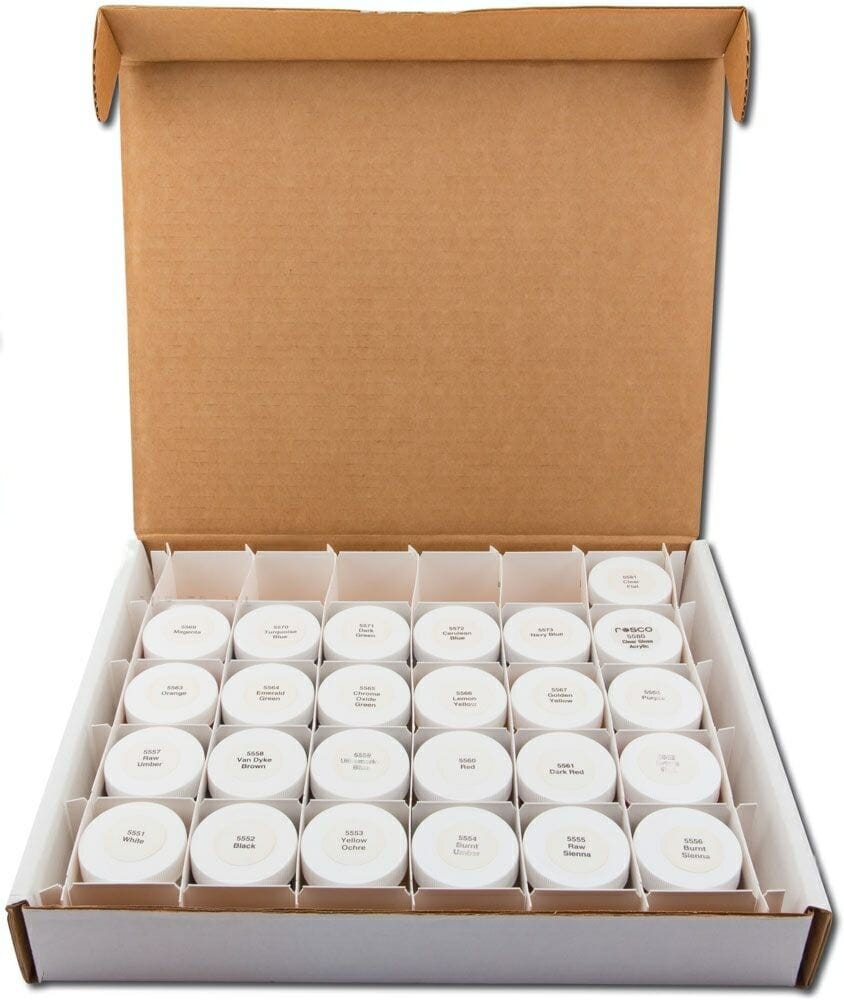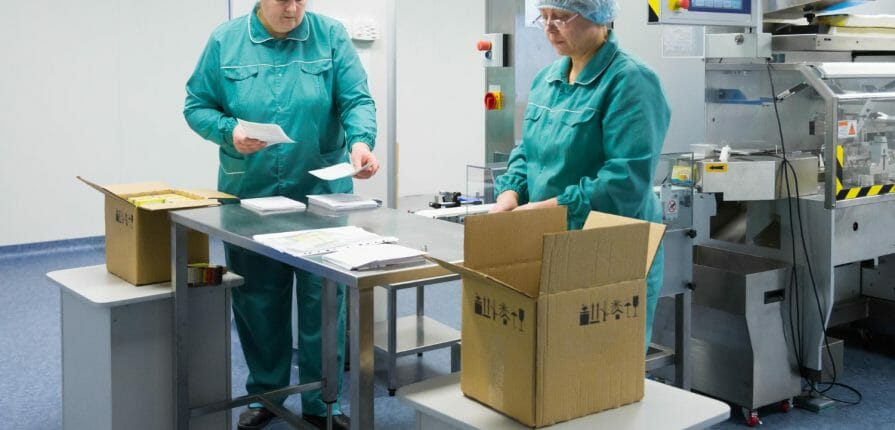Modern medicine has changed nearly every aspect of the way we live. We can now travel to remote parts of the world without fear of deadly diseases. We are living decades longer than our ancestors did, and in relative comfort. The ability to prevent and treat disease is a real game changer. That’s why it’s important that we treat these medicines as the matters of life and death that they are. We rely upon pharmaceutical cold chain packaging to make this dream a reality. What is a cold chain, you ask?
What is a pharmaceutical cold chain?
If you’ve never heard the term before, you’re not alone. A cold chain is a very important, but very niche set of operating procedures. It describes the way we transport temperature sensitive products from the point of manufacture to the point of sale. The cold chain allows us to ship these products without fear of damage or loss. The pharmaceutical cold chain applies these concepts to shipping pharmaceuticals.
The pharmaceutical cold chain is a chain of uninterrupted temperature controlled conditions that safely takes medications from the point of manufacture to the point of administration. That involves everything from storage to shipping and delivery, and it’s incredibly important to the pharmaceutical industry. Let’s touch briefly on each of these stages.
Storage
Not all products are ready to be delivered the moment they are produced. That means they will have to be stored for some period of time before heading to their destination. Proper storage conditions are essential to keeping the product viable until it is ready for delivery. If the product is being sent to another facility for storage, each facility will require the same means of keeping the product cold.
Shipping
Once an order has been placed, those products are ready to be shipped. Since most standard freight trailers have no temperature controls, it’s imperative that measures be put in place to ensure they remain viable. Mainly, we use cooled trailers capable of plunging the temperature inside to incredible depths, and we utilize proper pharmaceutical cold chain packaging.
Handling
Products often make more than one stop before being delivered, creating an opportunity for temperature fluctuations. Ensuring products are handled properly at these stages is vital to their safe arrival. This is another spot pharmaceutical cold chain packaging plays a large part, but more on that later.
Delivery
Once the product has arrived at its destination, the end user must have a way to keep it at temp until administration. Shippers have a set of strict controls to ensure the product arrives at its destination uncompromised. That means it arrives at the correct temperature and is immediately relocated to an area equipped to handle its temperature needs. A lot of steps go into delivering that end product at its target temp.
One of the most important aspects of the cold chain is proper packaging. It can help bridge gaps in the other stages of transport and alert us when the temp drifts outside the target range. Cold chain packaging looks different from packaging standard freight, so let’s take a quick look at what it involves.
What is cold chain packaging?
Even though the cold chain ensures shipments are kept at ideal temperatures throughout transport, it isn’t foolproof. In fact, many of the target temperatures are so incredibly low that it’s nearly impossible to achieve them at every stage.
Companies rely on packaging to bridge any gaps in the cold chain, should they arise. There are three main types of cold chain packaging in use today. They are: active, passive, and hybrid. Here’s a brief overview of each system.
Active Systems:
In an active system, products are kept cold through some mechanical or electrical system. Think of it like a mobile refrigerator or powered cooler. These systems are kept at a consistent temperature via a power source, as opposed to something like dry ice. It’s a very precise way of keeping a cold chain product at the correct temperature, but it can get expensive. For products with less stringent requirements, a passive system works well.
Passive Systems:
Passive systems are kept cold with a phase-change material (PSM) like dry ice. These types of materials release and absorb enough energy to make them useful for heating or cooling purposes. They have the ability to cool products very well, but it can be difficult to dial them into exact temperatures. That makes them less exact than active systems, but much more economical.
Hybrid Systems:
Hybrid systems, as you may have guessed, combine aspects of active and passive systems. This usually involves a phase-change material and a thermostatic control unit like a thermostat. The thermostat is capable of controlling the PSM to such a degree that the shipment maintains its target temp throughout, all while using minimal energy.
Even though great measures are taken to ensure the cold chain is reliable, cold chain packaging is an essential part of avoiding possible damage and loss of product. If the cargo is ice cream, that simply means a loss of product and a reduction in revenue. But if the cargo is medicine, that loss could result in vital medications not making it to those who need them. For this reason, pharmaceutical cold chain packaging is seen as being more important than cold chain packaging in most other industries.

Why is Pharmaceutical Cold Chain Packaging so Important?
Many medications require that they be kept at certain temperatures throughout their life cycles to remain safe and effective. Since some temperature requirements are hard to meet at every stage of the pharma cold chain, pharmaceutical cold chain packaging is an effective way to ensure medicines remain in the correct temperature range at all times.
You may remember when the COVID-19 vaccines were first released. Each required that a certain set of temperature requirements be met, and it was all over the news. To make things more complicated, the temperature ranges were not the same.
The range for each variation was incredibly low, and incredibly difficult to maintain throughout the shipping process. Vials were left open for a brief period, and essential vaccines were wasted as a result.
There are many examples of temperature-sensitive pharmaceutical products that must be kept at incredibly low temperatures for safe transport. They include things like mRNA, gene therapies, cell therapies, and a host of other products. You may be surprised at just how cold they must be kept, reinforcing the importance of pharmaceutical cold chain packaging.
mRNA:
We touched briefly on the COVID vaccines, and both the Moderna and Pfizer varieties were based on mRNA technology. It’s new and exciting technology, and also has very low temperature requirements to prevent degradation. mRNA requires constant temperatures in the range of -20 to -80 degrees Celsius.
Gene Therapies:
Another group of pharmaceuticals on the temperature sensitive drugs list is gene therapies. Gene therapies are medicines intended to produce a therapeutic effect on living cells. They accomplish this by either manipulating cells to produce desired end products or by altering the biological properties of those cells. It’s an incredibly complex technology that requires incredibly low temperatures to keep the components safe and effective. These therapies must typically be kept at around -80 degrees Celsius.
Cell Therapies:
Cell therapies are another type of medicine that relies upon proper pharmaceutical cold chain packaging. That’s because there is a long period of time between their production and application. That’s because the cells taken from the patient or donor are typically stored for extended periods prior to being shipped. When you’ve got cold chain pharmaceuticals like these, that must be maintained at around -130 degrees Celsius, it’s imperative that they’re properly packaged.
Utilizing the Cold Chain for Pharma Products
Any time we have a medication that requires refrigeration, pharmaceutical cold chain packaging is what makes it possible. It allows us to distribute that medication to every corner of the world and maintain its potency throughout transport. Pharmaceutical cold chain packaging is an unsung hero of modern medicine. Giving it the attention it deserves makes the world a safer and healthier place for all of us.

